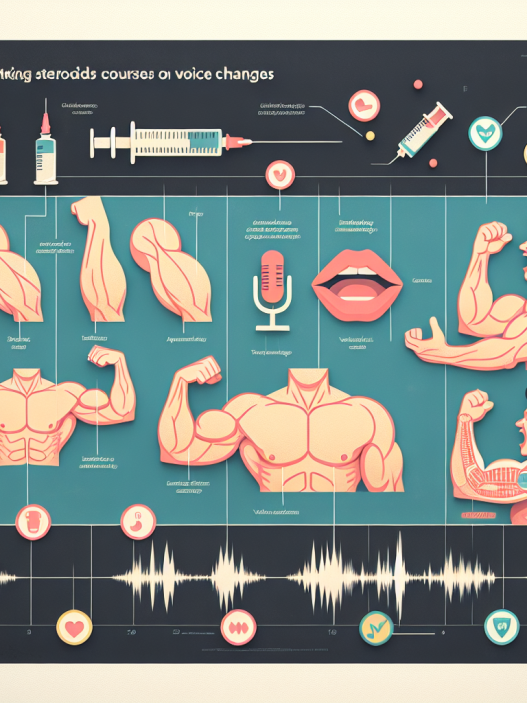-
Table of Contents
«Unlock your skin’s potential with SARMs – the ultimate supplement for a flawless complexion.»
Introduction
SARMs, or selective androgen receptor modulators, are a type of performance-enhancing drug that has gained popularity in recent years among athletes and bodybuilders. These compounds are designed to mimic the effects of anabolic steroids, but with fewer side effects. However, there is growing concern about the potential effects of SARMs on the skin, as they can disrupt the body’s hormonal balance and lead to various skin issues. In this article, we will explore the potential effects of SARMs on the skin and what individuals should be aware of before using them.
The Impact of SARMs on Skin Health: What You Need to Know
SARMs, or selective androgen receptor modulators, have gained popularity in recent years as a performance-enhancing drug. These compounds are often marketed as a safer alternative to traditional anabolic steroids, with claims of increased muscle mass, strength, and fat loss. However, as with any supplement or drug, there are potential side effects that users should be aware of. One area of concern is the impact of SARMs on skin health.
SARMs work by binding to androgen receptors in the body, which are responsible for regulating the development and maintenance of male characteristics. This can lead to an increase in muscle mass and strength, but it can also have an effect on the skin. Androgens play a role in the production of sebum, the oily substance that helps keep the skin moisturized. When androgen levels are altered, it can lead to changes in sebum production, which can have a direct impact on the skin.
One of the most common side effects of SARMs on the skin is acne. Androgens stimulate the production of sebum, and when this production is increased, it can clog pores and lead to breakouts. This is especially true for individuals who are already prone to acne. SARMs can also cause an increase in the size of sebaceous glands, which can further contribute to acne development. This side effect is not limited to the face, as acne can also appear on the chest, back, and shoulders.
Another potential impact of SARMs on skin health is hair loss. Androgens play a role in hair growth, and when androgen levels are altered, it can lead to hair loss. This is especially true for individuals who are genetically predisposed to male pattern baldness. SARMs can accelerate this process, leading to thinning hair or even baldness. This side effect is more common in SARMs that have a higher androgenic activity, such as S23 or RAD140.
In addition to acne and hair loss, SARMs can also cause changes in skin texture. Androgens play a role in collagen production, which is responsible for the elasticity and firmness of the skin. When androgen levels are altered, it can lead to a decrease in collagen production, resulting in skin that appears dull, dry, and saggy. This can also contribute to the development of wrinkles and fine lines.
Furthermore, SARMs can also have an impact on skin pigmentation. Androgens play a role in the production of melanin, the pigment that gives skin its color. When androgen levels are altered, it can lead to an increase in melanin production, resulting in darker patches of skin. This is especially true for individuals with a darker skin tone. On the other hand, some SARMs can also cause a decrease in melanin production, resulting in lighter patches of skin.
It is important to note that the impact of SARMs on skin health can vary from person to person. Some individuals may experience more severe side effects, while others may not experience any at all. It is also worth mentioning that the use of SARMs is not regulated, and the quality and purity of these compounds can vary greatly. This can also contribute to the severity of side effects.
In conclusion, while SARMs may offer some benefits in terms of muscle growth and performance, they can also have a significant impact on skin health. Acne, hair loss, changes in skin texture and pigmentation are all potential side effects of using SARMs. It is important for individuals considering the use of these compounds to weigh the potential risks and benefits and to consult with a healthcare professional before starting any supplementation. Additionally, proper skincare and hygiene practices can help mitigate some of these side effects.
Understanding the Potential Side Effects of SARMs on Skin
SARMs, or selective androgen receptor modulators, have gained popularity in recent years as a performance-enhancing supplement in the fitness world. These compounds are designed to mimic the effects of anabolic steroids, but with fewer side effects. While they may offer benefits such as increased muscle mass and improved athletic performance, there is growing concern about the potential side effects of SARMs on the skin.
One of the main concerns with SARMs is their impact on the production of natural hormones in the body. These compounds work by binding to androgen receptors, which are responsible for regulating the production of hormones like testosterone. By altering the balance of hormones in the body, SARMs can have a direct effect on the skin.
One of the most common side effects of SARMs on the skin is acne. Androgens, such as testosterone, play a role in the development of acne by increasing the production of sebum, the oily substance that clogs pores and leads to breakouts. SARMs can disrupt the balance of androgens in the body, leading to an increase in sebum production and ultimately, acne.
In addition to acne, SARMs can also cause other skin issues such as oily skin, rashes, and even hair loss. These side effects are often a result of the hormonal changes caused by SARMs. For example, increased levels of androgens can lead to excess oil production, which can clog pores and cause rashes. Similarly, hair loss can occur when SARMs disrupt the balance of hormones that regulate hair growth.
Another potential side effect of SARMs on the skin is gynecomastia, or the development of breast tissue in males. This is due to the conversion of excess testosterone into estrogen, a process known as aromatization. SARMs can increase the risk of aromatization, leading to an imbalance of hormones and the development of gynecomastia. This side effect can be particularly concerning for male users of SARMs, as it can have a significant impact on their physical appearance and self-esteem.
Aside from the direct effects on the skin, SARMs can also have indirect effects that can impact skin health. For example, SARMs have been shown to increase the risk of liver damage, which can have a negative impact on the skin. The liver plays a crucial role in detoxifying the body, and when it is not functioning properly, toxins can build up and manifest as skin issues such as rashes, eczema, and psoriasis.
Furthermore, SARMs can also affect the body’s ability to heal and recover from injuries. This can be a significant concern for athletes who use SARMs to improve their performance. The skin is the body’s first line of defense against external threats, and when it is compromised, it can lead to delayed healing and an increased risk of infection.
It is essential to note that the potential side effects of SARMs on the skin are not limited to those mentioned above. As these compounds are relatively new and not yet regulated, there is limited research on their long-term effects. Therefore, it is crucial for individuals considering using SARMs to be aware of the potential risks and to consult with a healthcare professional before use.
In conclusion, while SARMs may offer benefits in terms of muscle growth and athletic performance, they also come with potential side effects on the skin. These compounds can disrupt the balance of hormones in the body, leading to issues such as acne, oily skin, rashes, and gynecomastia. Additionally, SARMs can indirectly impact skin health by affecting the liver and the body’s ability to heal. As with any supplement, it is essential to weigh the potential risks against the benefits and to consult with a healthcare professional before use.
How to Protect Your Skin While Using SARMs: Tips and Precautions
SARMs, or selective androgen receptor modulators, have gained popularity in recent years as a performance-enhancing supplement for athletes and bodybuilders. These compounds are known for their ability to increase muscle mass and strength without the negative side effects of traditional steroids. However, like any supplement, SARMs can have potential side effects, including effects on the skin.
One of the most common side effects of SARMs is acne. This is because SARMs can increase the production of sebum, the oily substance that clogs pores and leads to breakouts. This is especially true for individuals who are already prone to acne. The increase in sebum production can also lead to oily skin, making it important to properly cleanse and moisturize the skin while using SARMs.
To protect your skin from acne while using SARMs, it is important to maintain a consistent skincare routine. This includes washing your face twice a day with a gentle cleanser and using a non-comedogenic moisturizer. Non-comedogenic products are specifically designed not to clog pores, making them ideal for individuals using SARMs. Additionally, exfoliating once or twice a week can help remove dead skin cells and unclog pores, preventing acne breakouts.
Another potential side effect of SARMs is hair loss. This is because SARMs can increase the production of dihydrotestosterone (DHT), a hormone that can lead to hair loss in individuals who are genetically predisposed to it. To protect your hair while using SARMs, it is important to use a gentle shampoo and conditioner and avoid harsh chemicals or heat styling tools. Additionally, incorporating hair growth supplements or biotin into your routine can help promote hair growth and prevent hair loss.
In addition to acne and hair loss, SARMs can also cause skin dryness and irritation. This is because they can disrupt the body’s natural hormone balance, leading to a decrease in the production of natural oils that keep the skin hydrated. To combat this, it is important to use a hydrating moisturizer and avoid harsh skincare products that can further dry out the skin. It is also recommended to drink plenty of water to keep the skin hydrated from the inside out.
Another precaution to take while using SARMs is to protect your skin from the sun. SARMs can increase the body’s production of melanin, the pigment that gives skin its color. This can lead to a darker complexion, making it important to use sunscreen with a high SPF to protect your skin from harmful UV rays. Additionally, wearing protective clothing and avoiding prolonged sun exposure can also help prevent skin damage.
It is also important to note that SARMs can have different effects on different individuals. Some may experience more severe side effects, while others may not experience any at all. It is important to listen to your body and pay attention to any changes in your skin while using SARMs. If you notice any concerning side effects, it is best to consult with a healthcare professional.
In conclusion, while SARMs can have positive effects on muscle growth and strength, it is important to take precautions to protect your skin. Maintaining a consistent skincare routine, protecting your hair, staying hydrated, and protecting your skin from the sun are all important steps to take while using SARMs. It is also important to listen to your body and seek medical advice if you experience any concerning side effects. By taking these precautions, you can enjoy the benefits of SARMs while keeping your skin healthy and protected.
Q&A
1) ¿Qué son los SARMs y cómo afectan a la piel?
Los SARMs (moduladores selectivos de los receptores de andrógenos) son una clase de compuestos químicos que se utilizan como suplementos para mejorar el rendimiento físico y la masa muscular. Pueden afectar a la piel de diferentes maneras, como aumentar la producción de sebo, causar acné y cambios en la pigmentación.
2) ¿Existen efectos secundarios en la piel por el uso de SARMs?
Sí, el uso de SARMs puede tener efectos secundarios en la piel, como aumento de la producción de sebo, acné, cambios en la pigmentación y pérdida de cabello. Estos efectos pueden variar en intensidad dependiendo de la dosis y la duración del uso.
3) ¿Cómo se pueden tratar los efectos en la piel causados por el uso de SARMs?
Si experimentas efectos en la piel después de usar SARMs, es importante consultar a un médico o dermatólogo para determinar el mejor tratamiento. Pueden recomendarte productos tópicos para el acné, medicamentos para controlar la producción de sebo o tratamientos para mejorar la pigmentación. También es importante dejar de usar SARMs y seguir una dieta y rutina de cuidado de la piel adecuadas para ayudar a mejorar los efectos en la piel.










